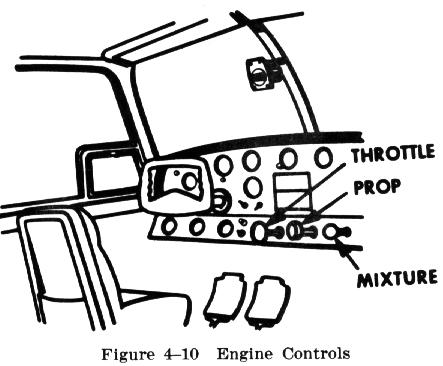| The throttle is the control with which the pilot controls
the engine's power output. In tandem seating airplanes it is located on
the left side of the cockpit along with other primary engine controls,
and in side by side seating airplanes it is centrally located on the lower
portion of the instrument panel. On some airplanes all the engine controls
(throttle, mixture, and propeller) are installed on a separate unit called
"engine control quadrant." By means of linkage the throttle is connected
to the carburetor (or fuel control unit in fuel injection engines) to regulate
the amount of fuel/air mixture supplied to the engine, thereby controlling
the power developed (Fig. 4-10).
The power output (and the engine RPM in the case of fixed pitch propeller
airplanes) is increased by pushing the throttle forward and decreased by
pulling it aft. Unlike an automobile accelerator or gas pedal, the airplane's
throttle has no spring return and will remain in any position to which
it is set by the pilot. Undesired "creeping" can be prevented |
|
